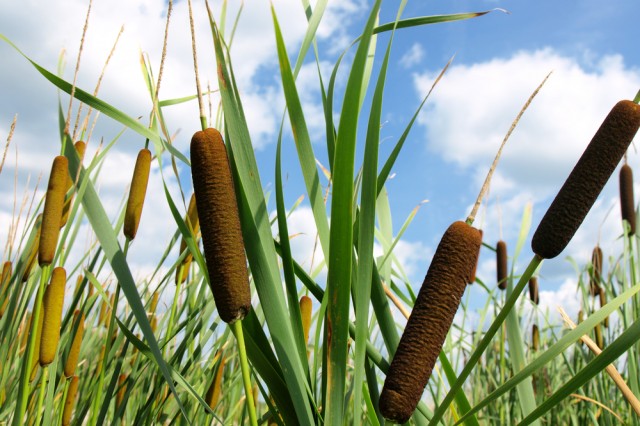There’s a powerful satisfaction that comes in the moment you successfully identify a wild edible, the term used to describe plants found growing in nature that are not being actively cultivated as a food source, yet which are a nutritious and often tasty food nonetheless.
Finding a “trail snack” on the ground can impress your friends or your date, but so too can a bit of foraging prowess help keep you fed and fortified as you hike or camp, or even if you find yourself lost in the wilderness in an emergency situation.
Just a little bit of knowledge about a few wild edibles can go a long way toward keeping you safe out there in the field. In fact, if you only learn one thing about safe foraging for wild food, let it be this:
If you’re not 100% sure what you’re about to eat is safe… DON’T… EAT IT!
It’s almost comical how many things you can’t eat, when you think about it. And I’m not talking about rocks and Hondas and strips of fabric, I’m talking about plants. In an effort specifically catered toward avoiding their being eaten, countless plants have developed countless measures to make themselves insipid, unpleasant, or downright deadly. Eating most plants will induce some indigestion and discomfort; others will see you laid up with nausea, fevers, and other unpleasant symptoms; and still others will kill you with alacrity.
With that in mind, rather than trying to give you a crash course in all the food-ready flora of world’s forests, we’re going to focus on just three wild edibles that are quite common across much of America (and other parts of the globe) that can be readily identified by anyone who is paying even a bit of attention. It’s better to be sure about a few foods than to be wondering about a plethora, given that whole “kill you with alacrity” thing.
DANDELION – Taraxacum officinale
You know what a dandelion looks like, right? Why, it’s that plucky “weed” with the bright yellow stringy bloom of a flower that grows everywhere from city sidewalks to suburban yards to wild, untamed forests and meadows! And you might want to think twice before the next time you disparage a dandelion as a weed, mister, because what you’re actually looking at is a tasty, rich source of vitamins A, K, and C, and a plant that can be eaten flower, leaves, roots and all. That’s right, you can pull that bright yellow head off of a dandelion and chew it up raw, or you can make a batch of dandelion wine. You can also gobble down the broad green leaves growing near the base of the dandelion’s stem — they’re great in salads, on a sandwich, or by the ravenous handful if you’re dying of hunger. Assuming you’re not, try briefly cooking them in a pan with a bit of butter and/or oil.

Where there’s fresh water, there are often cattails. These easily identifiable plants grown in clusters of tall reeds marked by those unmistakable tubular brown “spikes” (they look more like sausages, but are in fact called spikes) atop thick stems. And, as with so many wild edibles, you can eat stem, root, and flower of the cattail alike. Starting off with the top, if you find a stand of cattails in the right season, you can collect the bright yellow pollen surrounding the top of the stalk and use it just like flour to make bread, pancakes, and so forth. The thick stem of the cattail itself houses a fibrous and tasty core; remove the sheath of the stalk and snack on the inner material just like you would with an asparagus — it’s fine to eat this part of the plant cooked or raw, but the later you are into the season, the more advisable cooking becomes. And finally, get down to the roots here. A cattails roots are packed with both carbohydrates and protein, and with a bit of cleaning, can be enjoyed like potatoes or can be ground into flour. Just take the time to remove the fibrous material either through grinding or through soaking and peeling.

OK, this is the only one on the list that you might not already be able to identify easily. In fact, you’re probably going to screw it up a few times and eat some clover. But that’s OK, because clover is totally innocuous, it’s just not very tasty. You can identify wood sorrel by the three leaves that grow off of each slender stem; each leaf is heart-shaped, divided down the middle. A patch of wood sorrel will often be studded with small flowers that are usually star-shaped, with five petals that may be white, yellow, or even a shade of pink. Wood sorrel is mildly sour in taste (in a good way, most people agree) and is often even known as “sour grass.” Eat wood sorrel raw, ideally mixed with a plateful of dandelion greens and a bread made from cattail pollen. Also, ideally, you’d have some beer with you.
BONUS – BERRIES & MUSHROOMS
It’s pretty easy to identify most berries you know well from the grocery store or farmer’s market when you come across them in the wild. If you’re pretty sure you found a blueberry or blackberry bush, give a smell, then a tiny nibble. If your tastebuds confirm what your eyes suspected, dig in! If not, stop eating.
And hey, don’t eat wild mushrooms. Unless you are 100% sure of what you’re about to ingest, just don’t do it. The majority of the world’s mushrooms are considered inedible. They might make you sick, and they won’t be digested for nutrients. About a quarter of the mushrooms on earth may give you a bit of nutrition, but will taste horrid. Fewer than five percent are considered tasty (by some) and nutritious. The rest will sicken or kill you. So just don’t eat ’em, man. They are fungus, after all.




